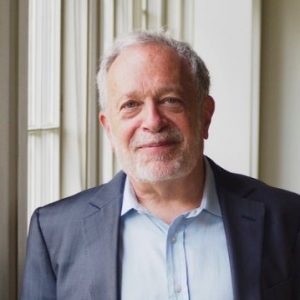Copper Country People & Places
The end of our history journey together
There are two phrases I have always challenged: “So and So made history when he …” and ” — changed the course of history.”
In the first instance, it is not the person who makes history; it is history that makes the person. As an example, it has been written of Union General Ulysses S. Grant that he made history when did this or that. I hold that the opposite is true. Had it not been for the Civil War, Grant would have lived out his life in an obscure saddle shop in Galena, Illinois. History made U.S. Grant General Grant.
As for “changing the course of history,” that is impossible, because the course of history is not charted at the time a historical event occurred, rendering it necessary to have a divine knowledge of what would have occurred had that event not taken place.
Likewise, it is impossible to compile an accurate history of a mining region without emphasizing the people who mined the region. Copper does not mine itself, nor do mines appear without human activity creating them. Were it not for tens of thousands of miners from all over the world coming to the Copper Country to work, no mine in the Lake Superior region would ever have been opened. With those tens of thousands of miners and workers came wives and children who were willing to come to the region to build a new life, a new culture, a new community. It is that way with the Copper Country.
For over a decade now, we have sat together over morning coffee and discussed the history of the Copper Country from the days of the French Fur traders, voyageurs, when it was owned and peopled by the Ojibway nation, to the rise, decline, and end of the nation’s first modern copper mining region that was a major contributor to the Industrial Revolution.
We have challenged the long-held notion that the Lake Superior copper region was an isolated wilderness, far from civilization using men like Charles Gratiot and Curtis Grubb Hussey as examples. Gratiot, as we learned, was the man who first brought Cornish immigrant miners to the region in 1844, from the Lead District of Wisconsin. Hussey, who funded many of the first mining ventures, such as the Cliff, on Keweenaw Point, and the National, in the Ontonagon River District, purchased a vast majority of the copper his mines produced. Shipping it to his rolling mills in Pittsburg, Hussey built a national copper and brass market, making his the first vertically integrated company in the United States.
We’ve explored together how Michigan copper was integral to the American Industrial Revolution, the development of the telegraph, the telephone and electrical service, as well as the automotive industry, across America in the form of copper wire. People heard reports of a northwestern frontier. They came. They transformed the frontier.
We have discussed the settlement and buildings of towns and communities around mining ventures that disappeared when those ventures failed. We’ve also discussed communities that grew as their host companies succeeded. We examined the infamous labor strike of 1913-14 from both sides of the conflict, and mourned the losses of those who died on both sides. We lamented the loss of thousands more who used the strike as an opportunity to leave the Copper Country for other regions, other jobs, and other lives.
It has taken nearly 11 years to cover the centuries that we have. But while we reached the 9,000-foot depth of the Quincy mine, we have barely scratched the surface. We have, however, explored and discussed the highlights and high points of the history and the people that inadvertently created what was the most celebrated mining district of the 19th and early 20th century.
And, we walked through the decline, death and rebranding of the Copper Country into “The Keweenaw.”
It has taken more than 10 years for us to cover the major events and the people of the Copper Country, and as has been the intent since it began, last week brought us to a point in Copper Country history we all know and remember. And for a number of months, there have been plans to fill this space with other interesting features.
And so, with great sadness, we will end Copper Country’s Past & People with my saying thank you. Thank your for nearly 11 years, more than 520 Saturdays, of sharing our wonderful history of our wonderful region together. Thank you for making Copper Country’s Past & People one of the most popular columns in the history of the Daily Mining Gazette, and thank you for catching my mistakes and gently correcting them.
So, as our walk through history together comes to an end, I will end it with a quote, as a metaphor, from Winnie the Pooh:
“But, of course, it isn’t really Good-bye, because the Forest will always be there … and anybody who is friendly with bears can find it.”






